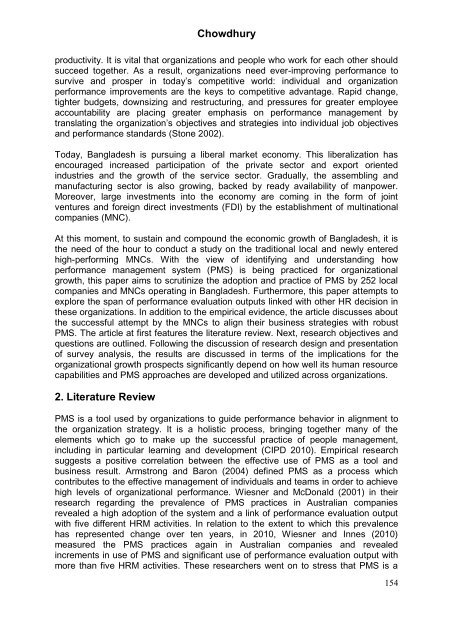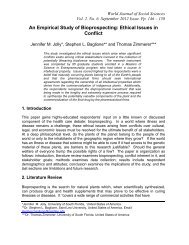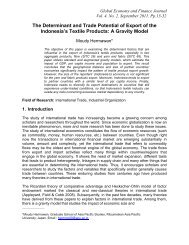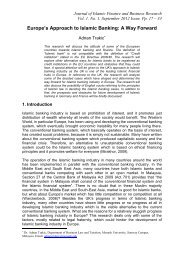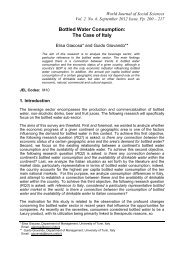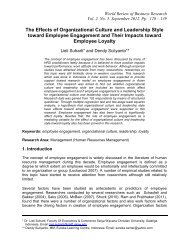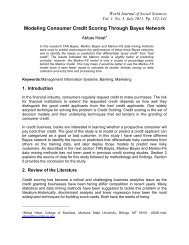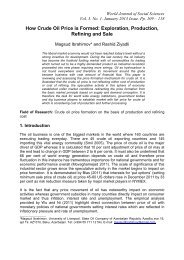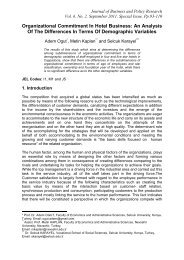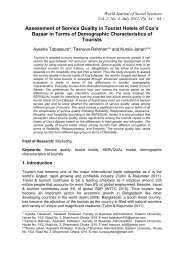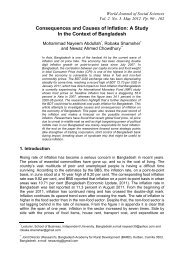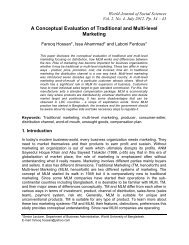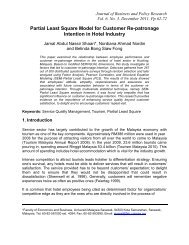Muhammad Faisol Chowdhury - Wbiaus.org
Muhammad Faisol Chowdhury - Wbiaus.org
Muhammad Faisol Chowdhury - Wbiaus.org
Create successful ePaper yourself
Turn your PDF publications into a flip-book with our unique Google optimized e-Paper software.
<strong>Chowdhury</strong>productivity. It is vital that <strong>org</strong>anizations and people who work for each other shouldsucceed together. As a result, <strong>org</strong>anizations need ever-improving performance tosurvive and prosper in today‟s competitive world: individual and <strong>org</strong>anizationperformance improvements are the keys to competitive advantage. Rapid change,tighter budgets, downsizing and restructuring, and pressures for greater employeeaccountability are placing greater emphasis on performance management bytranslating the <strong>org</strong>anization‟s objectives and strategies into individual job objectivesand performance standards (Stone 2002).Today, Bangladesh is pursuing a liberal market economy. This liberalization hasencouraged increased participation of the private sector and export orientedindustries and the growth of the service sector. Gradually, the assembling andmanufacturing sector is also growing, backed by ready availability of manpower.Moreover, large investments into the economy are coming in the form of jointventures and foreign direct investments (FDI) by the establishment of multinationalcompanies (MNC).At this moment, to sustain and compound the economic growth of Bangladesh, it isthe need of the hour to conduct a study on the traditional local and newly enteredhigh-performing MNCs. With the view of identifying and understanding howperformance management system (PMS) is being practiced for <strong>org</strong>anizationalgrowth, this paper aims to scrutinize the adoption and practice of PMS by 252 localcompanies and MNCs operating in Bangladesh. Furthermore, this paper attempts toexplore the span of performance evaluation outputs linked with other HR decision inthese <strong>org</strong>anizations. In addition to the empirical evidence, the article discusses aboutthe successful attempt by the MNCs to align their business strategies with robustPMS. The article at first features the literature review. Next, research objectives andquestions are outlined. Following the discussion of research design and presentationof survey analysis, the results are discussed in terms of the implications for the<strong>org</strong>anizational growth prospects significantly depend on how well its human resourcecapabilities and PMS approaches are developed and utilized across <strong>org</strong>anizations.2. Literature ReviewPMS is a tool used by <strong>org</strong>anizations to guide performance behavior in alignment tothe <strong>org</strong>anization strategy. It is a holistic process, bringing together many of theelements which go to make up the successful practice of people management,including in particular learning and development (CIPD 2010). Empirical researchsuggests a positive correlation between the effective use of PMS as a tool andbusiness result. Armstrong and Baron (2004) defined PMS as a process whichcontributes to the effective management of individuals and teams in order to achievehigh levels of <strong>org</strong>anizational performance. Wiesner and McDonald (2001) in theirresearch regarding the prevalence of PMS practices in Australian companiesrevealed a high adoption of the system and a link of performance evaluation outputwith five different HRM activities. In relation to the extent to which this prevalencehas represented change over ten years, in 2010, Wiesner and Innes (2010)measured the PMS practices again in Australian companies and revealedincrements in use of PMS and significant use of performance evaluation output withmore than five HRM activities. These researchers went on to stress that PMS is a154


